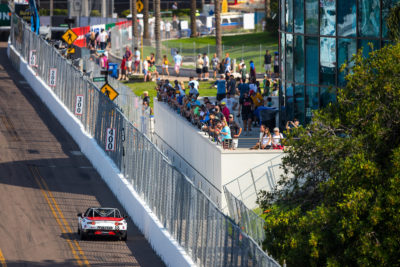In yesterday’s article, “Sim Racing is Just Getting Going,” Jim Bowie spoke to why virtual racing will explode. In this segment, we continue on this topic, homing in on the role of the big prize and how to incentivize participation behind the wheel – key in growing audience who can appreciate the sport.
iRacing has close to 200,000 racers (members) – which has about doubled since the pandemic. While the number of racers competing in real life (IRL) has not doubled in the past two years, the majority of the increase in sim racing participation has come from reaching racing enthusiasts, a stat that bodes well for accomplishing the overall goal outlined in yesterday’s article – marketing veteran Jim Bowie’s four pillars into growing sports audience.
iRacing alone, however, is far from moving the needle on audience size for the benefit of real-life motorsports. And when you compare iRacing to Sony’s Gran Turismo games that, collectively, are approaching 100 million copies sold, you quickly realize that simulation racing is still just a niche activity.
Perhaps this changes.
Announced January 4, 2022, iRacing acquired Monster Games, Inc. (MGI), which has a “long history of racing game development, including the NASCAR heat franchise and more recently Tony Stewart’s Sprint Cup Racing game,” according to it press release.
While we don’t yet know the plans for MGI under the iRacing banner, this could mean great things not only for the gamers, but motorsport as an industry.
The positive correlation of player base to audience base: “Significantly increasing motorsport simulation participation will significantly increase audience size, as proven by traditional sports and the biggest esports titles such as Dota 2,” stated to Bowie. “There are ~26 million current baseball and softball players in the U.S., greatly contributing to Major League Baseball’s audience; but one needs to look no further than the millions who watch the Dota 2 Invitational championship that is streamed online to see what a massive player base and big prize can do for the audience size, further proof of two of the pillars.” (See yesterday’s article highlighting the pillars here).
Part of the answer to increasing audience in motorsports to increase its simulation use.
It’s well known that sophistication of iRacing makes it harder to play than games such as Gran Turismo. According to Bowie, “A key to overcoming difficulty of playing simulation racing is one of the four pillars. People need a reason to play the game. You need to a reason to get up when you fall (traditional stick and ball sports), or run off the track (racing simulation); you need a reason to invest your time and energy to start and continue an activity. And you need social capital, which may be more important now than ever before. You need to be able to answer or tell your friends why you are doing this this activity. Having a big prize, or an endgame, is key. Racing simulation, and particularly iRacing, often offers fairly big prizes – the opportunity to develop one’s skillsets, virtually, in motorsports, and taking that skill set to a real race car and track by winning an esports tournament, with the goal of becoming a pro racing driver for your career.”
iRacing’s rise in membership only helps the sport. And while most motorsport enterprises leverage iRacing for its prizes and pursuit of talent, the answer to audience aggregation needs to happen across an increase in participation across several of the big racing titles such as Gran Turismo and Forza Motorsport, while enhancing engagement between the players and those in the motorsports business. A simple tournament with one or a few winners is not enough.
“By incentivizing current motorsports gamers to play, bringing back many lapsed gamers, and incentivizing new ones, all the while helping them or motivating them to improve their racing acumen is key – and across all main racing titles, from simulation to the arcade types,” continued Bowie. After all, another Bowie pillar is ensuring the audience has played the game/sport, so it can understand it, relate to it, and appreciate it.
“The prizes have only impacted the select few, and even fewer have turned their virtual racing careers into sustainable, racing careers in real life,” stated Bowie. “Player base has only risen marginally; the understanding and appreciation of the sport has not reached the masses. But it can. Once the prizes become truly impactful, reaching the broader audience, expect another lift in those who play and watch racing games, particularly on the more sophisticated sims such as iRacing.
“But simply modifying the prizes is only part of the answer,” continued Bowie. “If I were to sum up the key to success for building player base and audience in one word, it’s community. Building community is key, and the big prize or ‘carrot’ is just one of the areas of focus in doing so.”


 ACCESSIBILITY
ACCESSIBILITY